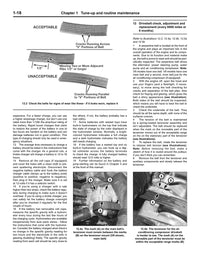The only connection between you and the road on a motorcycle is its tires. Tires need to be properly maintained on a regular basis. Do you, however, know when they require replacing? Learn everything about how often to replace motorcycle tires in this helpful guide!
Durability, composition, and the lifespan of tires vary. Due to these differences, you should regularly check for wear indicators to determine when they need to be replaced.
Tire Composition
Motorcycle tires may appear to be straightforward rubber hoops, but they are actually intricate products made from numerous layers of distinctive compounds and materials.
The tire's structure, flexibility, toughness, and grip are all derived from these layers. For the tire to operate at its peak efficiency, all of these are necessary components.
A compromise in any one of these areas could impact the tire's handling and safety.
Typical Tire Issues
Here is a quick rundown of the most typical tire issues and the justifications for tire replacements:
- Not enough air or too much weight: Both problems have the potential to cause sidewall damage and the tread to square off.
- Overinflated: excessive tire wear to the tire's center
- Incorrect wheel alignment: this may result in erratic wear patterns.
- High mileage: tread that is worn
- Puncture: Sidewall or tread damage
The tread pattern of the tire is its most noticeable feature. The textured pattern on top of the tire carcass, which is found around the tire's exterior, can reveal a lot about how many miles your tires have left in them.
Though the most common reason for tire replacement may be low tread depth, let's see how low you can go.
The best method for completing this task is to look for your motorcycle's Tire Wear Indicator (TWI), though you can also use the conventional "penny in the groove" method or even a tread gauge.
Punctures and Repairs
Almost always happening at the worst possible times, punctures are a hassle to deal with. If you have tubeless tires, you might need to rely on a plug repair and an appropriate manual to get your vehicle running again.
It's great to be able to fix a flat tire on the side of the road, but keep in mind that this is only a short-term solution. After a puncture, it can be challenging to assess the extent of the carcass's damage.
Defective tires should be replaced as soon as possible.
How to Determine Your Motorcycle Tire's Age
There are other factors to consider when replacing motorcycle tires. Tires have a shelf life, just like the majority of consumables.
Motorcycle tire manufacturers advise that even if a tire still has a lot of tread left, it should be replaced every 5 to 6 years due to the drying out of the tire's various rubber compounds. On the sidewall of the tire, there is a 4-digit date code that contains this information. The first two numbers represent the year's first week, and the final two numbers represent the year.
Inspect Your Tires
The notable variations in weight, performance, and style of motorcycles make it impossible to give an average mileage for every motorcycle tire. Extreme temperatures, rough surfaces on the road, poor maintenance, and even where you park your bike are examples of external factors that could hasten tire wear.
Motorcycle tires have advanced quickly with the rise of hyper-sport, sports tourers, and dual-sport bikes. They tend to offer good mileage and grip.
One size does not fit all anymore. Additionally, since there is no such thing as an average tire life, routine tire inspection is crucial. The best way to keep your motorcycle tires in top condition and replace them on schedule is to take a hands-on approach. With a DIY manual, you’ll be able to keep your motorcycle tires and other parts in tiptop condition.

















